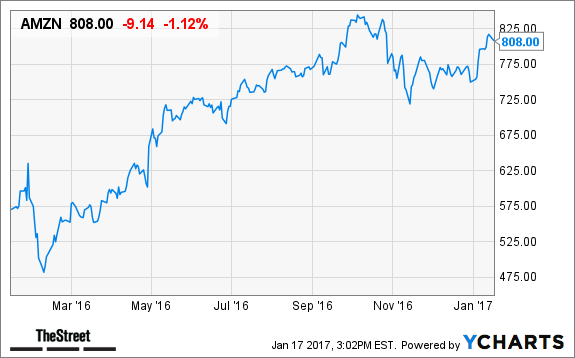Contents
During the slump period of the organization demand for the working capital increases. The general morale of the management of the company will increase by the financial soundness of the company. Companies having adequate working capital can easily tide throughout the depression. It is advised that the working capital should not be excessive as it can be disastrous. Here we have learned about what is net working capital, formula of net working capital, examples of net working capital along with why net working capital is important.
On the other hand, working capital is the difference between a firm’s current assets and current liabilities. Typically, it is described as the difference between a business’s current assets and current liabilities. The ratio obtained, further helps to estimate whether a company is capable enough to meet its short-term debts or not.

To manage working capital efficiently, companies must balance both payables and receivables. Individuals involved in business can increase their cash inflows by pledging unpaid invoices, i.e., a company’s accounts receivables and get cash instantly. Renowned working capital solution providers https://1investing.in/ like KredX provides working capital solutions at their digital platform. After successful submission and verification of invoices, business persons can receive funds within hours. Working capital consists of two major elements, gross working capital and net working capital.
The cumulative effect of change in current asset and current liability over the past year is captured in the data item changes in working capital. Hence, by the time financial information is calculated, the working capital of the company may have changed. Smaller businesses though may not have enough capital for significant inventory levels. B) The working capital management of a firm will have agreater impact on the firm’s profitability. A summary of a person’s or organization’s assets, liabilities and equity as of a specific date.
How to calculate working capital ratio?
In other words, permanent working capital is the least amount of current assets needed to carry out business effortlessly. This is because it greatly impacts the liquidity and profitability of the business. So you need to ascertain the amount of working capital needed and the sources of financing such a capital. This is to ensure that the working capital available is sufficient to meet the short term obligations of your business.
Purchasing fixed assets decreases a firm’s cash flow, which in turn lowers its current assets. For any company, inventory is the primary asset that converts investment or asset into sales revenue. Inventories refer to raw materials that businesses or organisations hold for reselling, manufacturing or utilisation. Often investors check the inventory turnover ratio to assess the strength of the sales of a company and its efficiency in purchasing and manufacturing.
It helps the management to take policy decisions and to decide about the financing policies and Capital Expenditure for the future. On the basis of this assumption and the forecasted cost of goods sold amount the accounts payable is calculated. Even short-term debt is a part of the current liabilities items, but it is forecasted later. Working capital change refers to the change in net working capital from one accounting period to that of another accounting period. It helps in ensuring that in every accounting year, sufficient level of working capital is with the company.
One of the best examples of this is the impact of change in working capital on cash flow. Under such circumstances, firm owners may opt for alternative funding options like – invoice discounting. This is a type of invoice financing facility which helps business owners to avail capital by leveraging their firm’s sales ledgers.
A company’s liquidity is an excellent sign of how a company is growing. Negative working capital means that a company owes more than it owns and a prolonged negative net working capital condition may be bad for the company. Valuation uses the change in free cash flow to look at NWC, though we exclude cash and short-term borrowings because we account for them later in the valuation process. Business entities can increase working capital by generating more revenue, issuing preferred stock or common stock and selling long term assets. When a firm sells a fixed asset, it increases its cash flow and in turn, boosts its working capital.
- It shows how easily the company can pay off its short-term liabilities, such as bank overdrafts, debentures, and trade creditors.
- Every unit of production remains in the process for 2 months and is assumed to be consisting of 100% raw material, wages and overheads.
- To elaborate, through invoice discounting business owners can sell their invoices or accounts receivable to lenders at a discounted rate, usually 70-90% of the original value.
- Notably, a sharp increase in working capital is often responsible for increasing the cost of a business.
Working Capital determines the company’s short term liquidity position or its ability to meet short term liabilities. It is termed as the difference between a company’s current assets and current liabilities. Working Capital changes is recorded in the cash flow statement since it is one of the major ways in which net income can be different from firm’s operating cash flow. It is arrived at by adding the items that comes under the section Cash Flow Statement of the firm. The fixed and the current assets play a vital role in the success of any company. Managing the working capital is mandatory because, it has a huge significance on profitability and liquidity of the business concern.
Current liabilities include the short-term obligations that need to be fulfilled within one operating cycle like accounts payable. Working capital represents operating liquidity that is available in any business, organization, or government entity. Working capital is a part of the operating capital hence all the assets are a part of working capital. In a simple language, working capital is money received or used to carry out the day to day activities of the company.
How does Working Capital Impact Your Business?
Notably, a sharp increase in working capital is often responsible for increasing the cost of a business. Conversely, inadequate working capital is among the primary reasons for the shortage of resources. Accounts receivable refers to the balance of money that an organisation is yet to receive for the goods and services offered to its customers. Accounts receivables are presented on the balance sheet as a current asset. A company can increase its working capital by selling more of its products. Unless the company chooses to restock its inventory, there will be no change in working capital.

Used to measure the short-term liquidity of a business, it is calculated using line items from a business’s balance sheet. Working capital is a measure of a company’s liquidity and its ability to cope up with short-term obligations, as well as fund operations of the business. The larger a company’s working capital is, the more likely it is that the company will be able to finance its short term expenses and debt obligations. To obtain the working capital of a specific firm or organisations one is required to subtract the current liabilities from the total current assets of the entity. This ratio suggests whether the particular organization has sufficient assets with it to take care of its short-term debt. Or organisation may be determined by subtracting the current liabilities from the total current assets.
Just as a low current ratio is not good, a very high current ratio is also not desirable. It implies that the company is making inefficient use of its short term resources by locking it up in debtors and inventories. Effectively, the company is ending up financing its clients whereas it what is change in working capital should be financing its vendors and suppliers. Gross Working Capital used alone neither shows the complete picture of the short-term financial soundness. Current assets should be compared with the current liabilities to get a better understanding of a business’s operational efficiency.
Business loan
The longer this period, the longer a company binds up money without receiving a return on it in its working capital. Companies aim to reduce their period of working capital by accumulating receivables faster or extending payable accounts often. The trade payables or accounts payable are an important part of the current liabilities. Additionally, the accounts payable notify this amount which a firm needs to pay against the credit purchases that have been made.
An example of 94 Pakistani firms recognized on Karachi Stock Exchange for a period of 6 years from 1999 – 2004. The results indicated that there is an adverse relationship between variables of working capital management and profitability. Padach analyzed that management practices are expected to assist managers in identifying zones where they might require improvement in the financial performance of their operation. The results provided owner-managers with information relating to the basic financial management practices used by their peers and their peers attitudes toward the selected practices. The working capital requirements of an organization change over times as does its internal cash generation rate.
However, some long-term perspectives can be utilized when approaching working capital. This includes how working capital is considered strategically, and the organizational policies around availability and utilization of working capital. You may assume that production is carried evenly throughout the year and wages and overheads accrue similarly. It also has easy to meet eligibility criteria for business owners and SMEs. It requires minimal documentation- with only KYC documents, passport size photo, business vintage, and some financial documents required. Your account will automatically be charged on a monthly basis until you cancel.
Over the course of five modules, you will accumulate a portfolio of 56+ practical valuations on real-world companies. No other course provides the same opportunity to hone your equity analysis skills in the same way. Let’s examine these items through data from the last chapter and my study of all listed companies across the world.

The company thus has a net working capital of Rs. 60,000, an amount that it can use for its short-term obligations. Summarises for a particular period the resources made available to finance the activities of an enterprise and the uses to which such resources have been put. Funds Flow Statement tallies the funds generated from various sources with various uses to which they are put. Cash Flow Statement starts with the Opening Balance of Cash and reaches to the Closing Balance of Cash. It is considered good to have working capital in sync with the industry standards or higher.
Difference between Gross Working Capital and Net Working Capital
A ratio of less than one implies that the corporation may have difficulty repaying its short-term debt. In other words, it’s the amount of money a company has on hand to meet its current asset-related needs. When you understand the different ways to increase the working capital for your companies, it is sure that your company will grow for now and in the future.
Cash on hand, inventory, accounts payable, and accounts receivable are just a few examples of what is contained in a company’s balance sheet. It is both a short-term financial indication and a measure of a company’s overall performance in the near term. Shows the business’s ability to pay off its current liabilities and short-term debts using its current assets.
Investments
Here are the most common practices for your business to enhance the working capital. The liquid assets position was 5.28crores in the year 2011 and eventually reduced to 3.12 crores in the year 2015 and thus there should be a better management of assets by the company. Many previous research studies have indicated the relations between working capital management, liquidity, profitability, risk and many more factors of a company in different environments. The importance of working capital in the long term profitability cannot be undermined.
